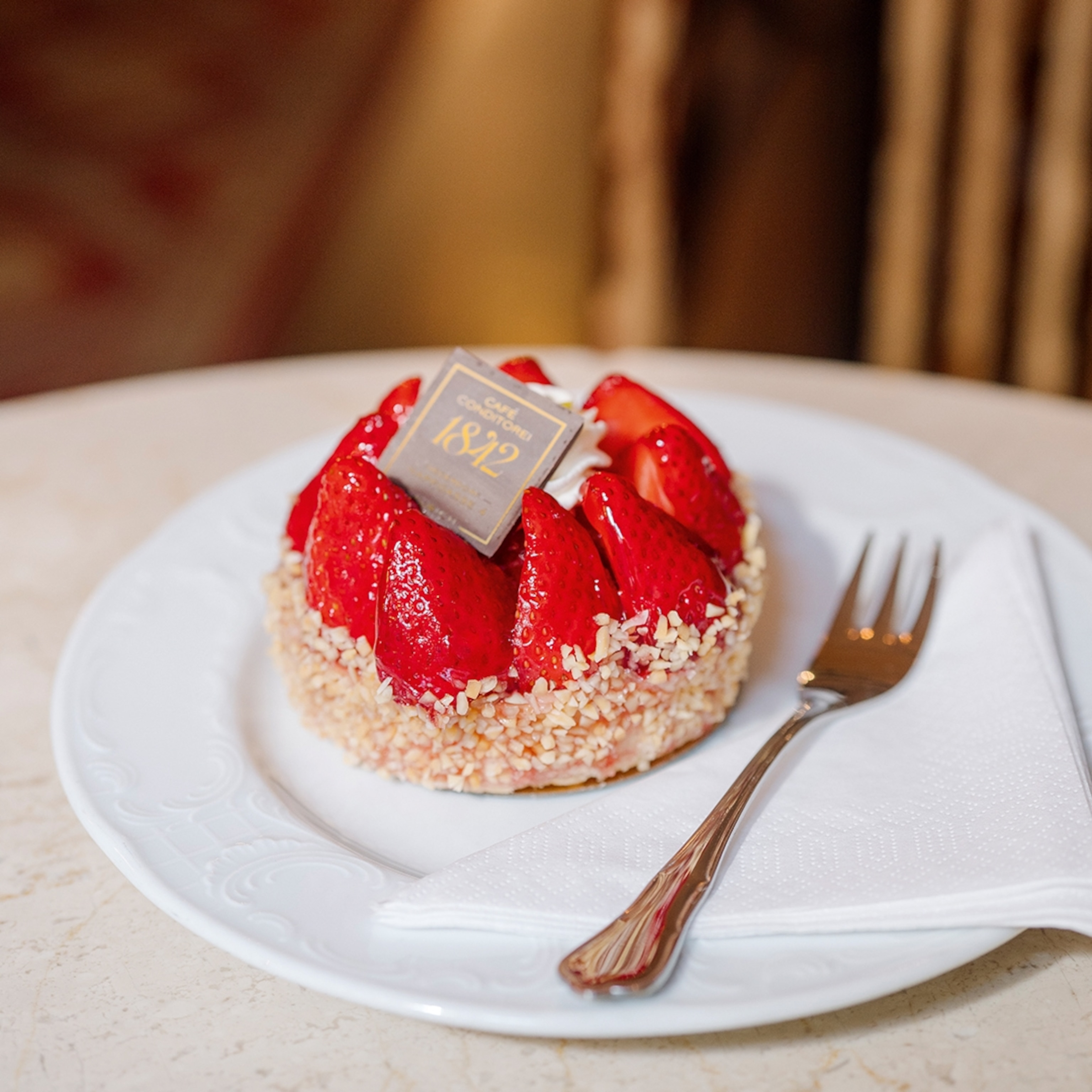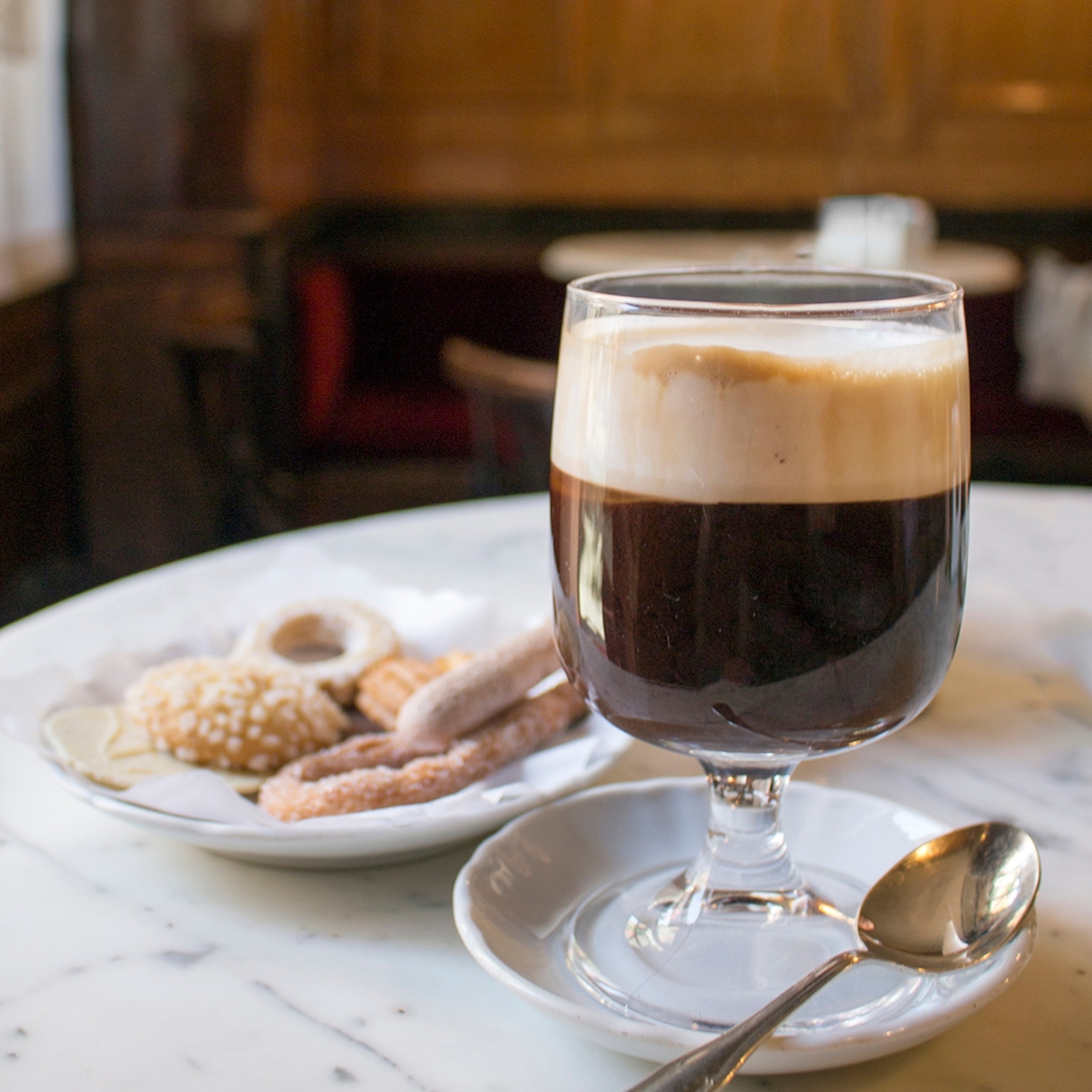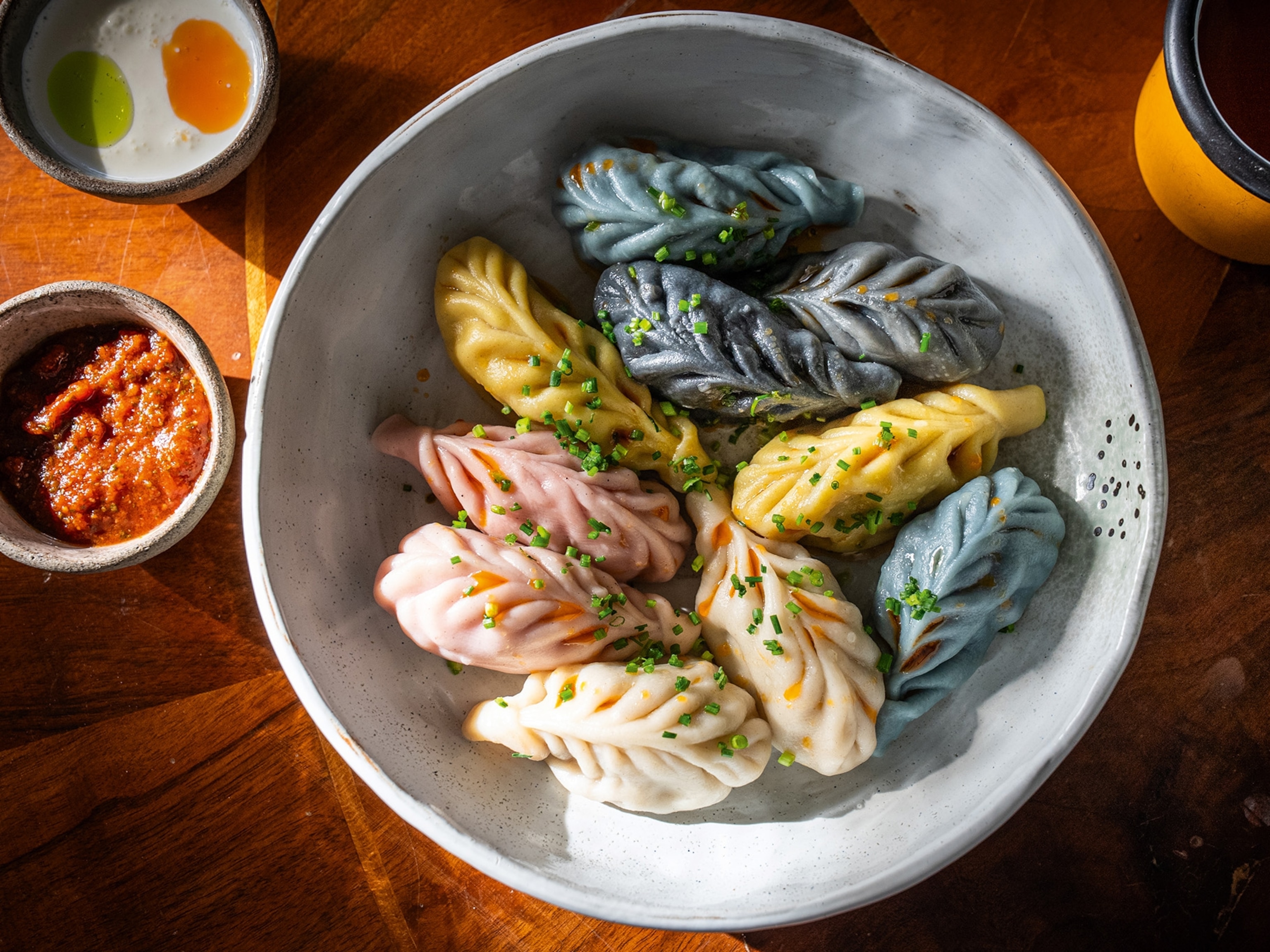
From challah to injera: 11 ways to fall back in love with bread
Whether you’re a dough addict or a dabbler, bread at its best is true pleasure. From challah to injera, here are 11 reasons to fall back in love with loaves.
Approximately 14,400 years ago, a Natufian baker burnt a round of unleavened bread. In 2018, it was found — charred and initially unidentifiable — in an ancient fireplace in Jordan. Up until this moment, bread consumption was thought to have begun much later, after the advent of grain farming around 10,000 years ago. However, this discovery suggested hunter-gatherers were making bread long before they settled around arable farms. In short, it shook up accepted notions of just how long bread has been in our lives.
Having been crucial to our survival for so long, these days bread is having a hard time of it, thanks to the fashion for low-carb diets and the rise in allergies and intolerances to wheat or gluten. Although it’s thought only 1% of the UK population suffer from coeliac disease, more and more people are keeping wheat at arm’s length, with 2019 research from Mintel finding 27% of people had purchased or eaten gluten-free products over a six-month period.
Various factors are blamed for the apparent increase in wheat allergies and non-coeliac gluten sensitivity, including the use of highly refined white flours; flours made from under- germinated grains; pesticides and fertilisers; emulsifiers, additives and enzymes added to factory-made breads; and lowered levels of good bacteria in the human gut microbiome.
Some analysts think modern bread-flour wheats — all developed since the 1950s — are more likely to trigger immune responses; others point out that many mass-produced breads are made with added ‘wheat protein’ (typically gluten). Studies also suggest species of ancient wheat, such as einkorn or spelt, have relatively low allergenicity, but the science is still so new that conclusions are hard to reach.
Some people with mild symptoms claim they fare better with sourdough breads — possibly because the long fermentation process involved in its production decreases and de-intensifies the gluten content. British supermarkets have seen demand soar in recent years — Marks & Spencer saw a 98% rise in 2017, Asda 50% — although the Real Bread Campaign argues these are rarely true sourdoughs, as many are industrially produced with added baker’s yeast.
Sourdough’s growing popularity has coincided with the renaissance of the artisan UK bakery, with brands such as Gail’s, Paul, Le Pain Quotidien and Ole & Steen leading the charge in London. Meanwhile, a recent study by insurer Simply Business showed a 48% rise in the number of independent UK bakeries between 2016 and 2018, a boom that neatly coincides with the ongoing ratings success of The Great British Bake Off. All of which suggests that, despite our increasing wariness of wheat, there’s a growing appetite for bread at its best.
So, if you’ve lost your love of loaves, here are 11 ways to rekindle it. Taking inspiration from bread-loving destinations across the globe, we bring you everything from the best baguettes in Paris to the joys of Ethiopian injera. All sure to blow a Natufian baker’s mind. RS
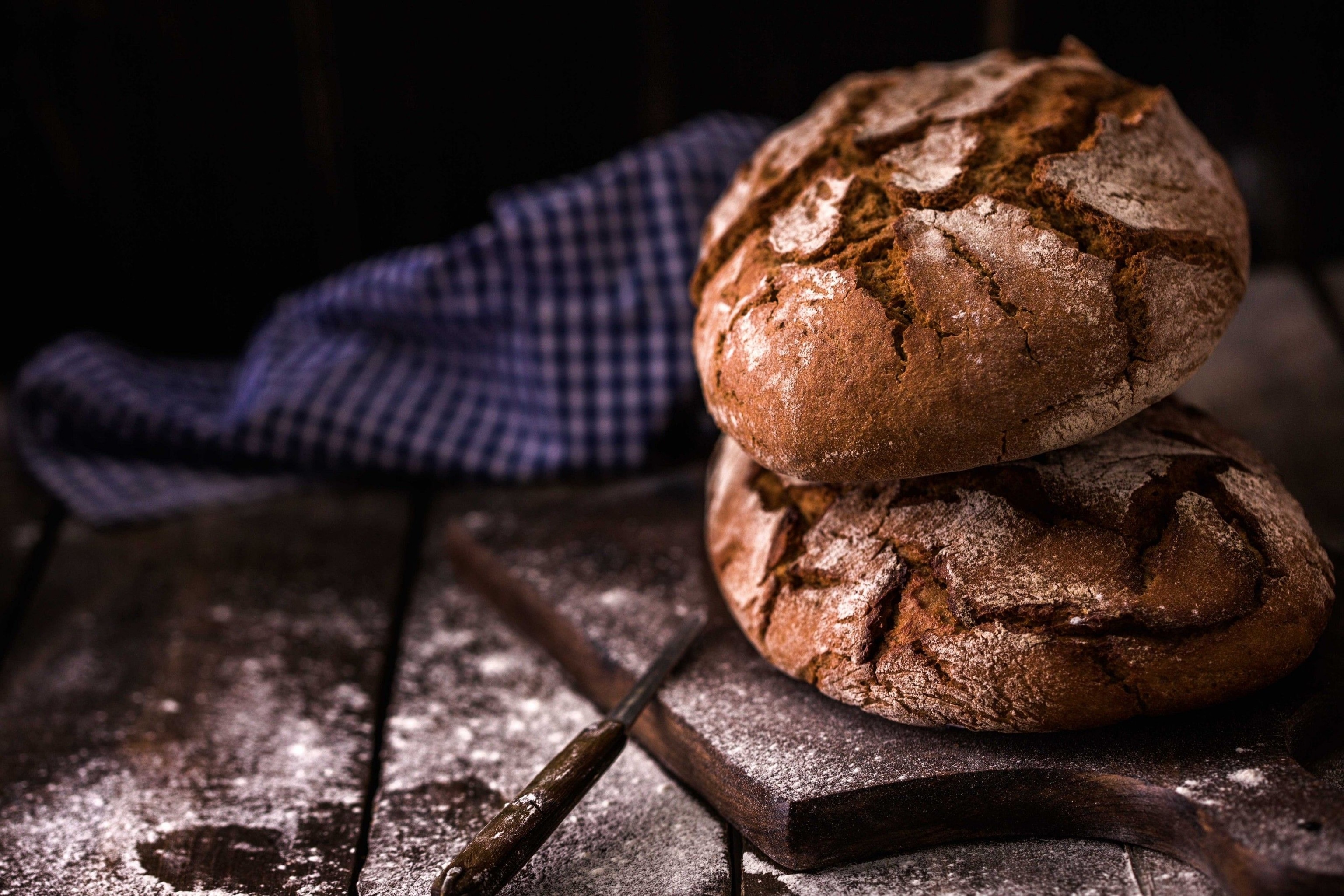
1. Get to grips with goblin bread
The etymology of German pumpernickel bread is rather silly: ‘pumpern’ means ‘to break wind’, and ‘nickel’ means ‘goblin’. It’s said the name came about due to the bread’s indigestibility — a little unfair given how comparatively nutritious it is.
Germans love bread — on average, they each eat more than 80kg a year; Britons manage 50kg — but, surprisingly, not much pumpernickel. “The market importance in Germany is rather small,” explains Bernd Kütscher, director of the German National Bakers Academy and head of the German Bread Institute. “But rye breads can be found in every region. They’re ideal for traditional German dinners — a slice of bread with ham, sausage or cheese.”
Most rye breads are made from milled flour, but pumpernickel uses a coarser, crushed whole-berry rye, with no added wheat flour. Also, like many rye breads, it needs to be made with a sourdough starter, rather than baker’s yeast, to avoid becoming inedibly dense.
Assuming it wasn’t invented by a goblin with an upset stomach, where does pumpernickel actually come from? “Westphalia, a region in western Germany,” says Bernd. “Legend has it that during the Soest Civil War [1444-1449], a baker forgot the bread dough he’d left in the slowly cooling oven and found it the next day,” adds Bernd. Today’s pumpernickel, like the forgetful baker’s, takes a long time to prepare (up to 24 hours). Even after it’s baked, you can’t tuck in straight away. “The finished bread must cool for at least one day before it can be cut,” insists Bernd. But for those who like their bread robust, it’s certainly worth the wait. RS
Where to start: Daylesford Organic Farm, in Gloucestershire, makes organic pumpernickel packed with raisins and molasses. London’s Karaway Bakery serves up a Lithuanian-style loaf with sunflower seeds.
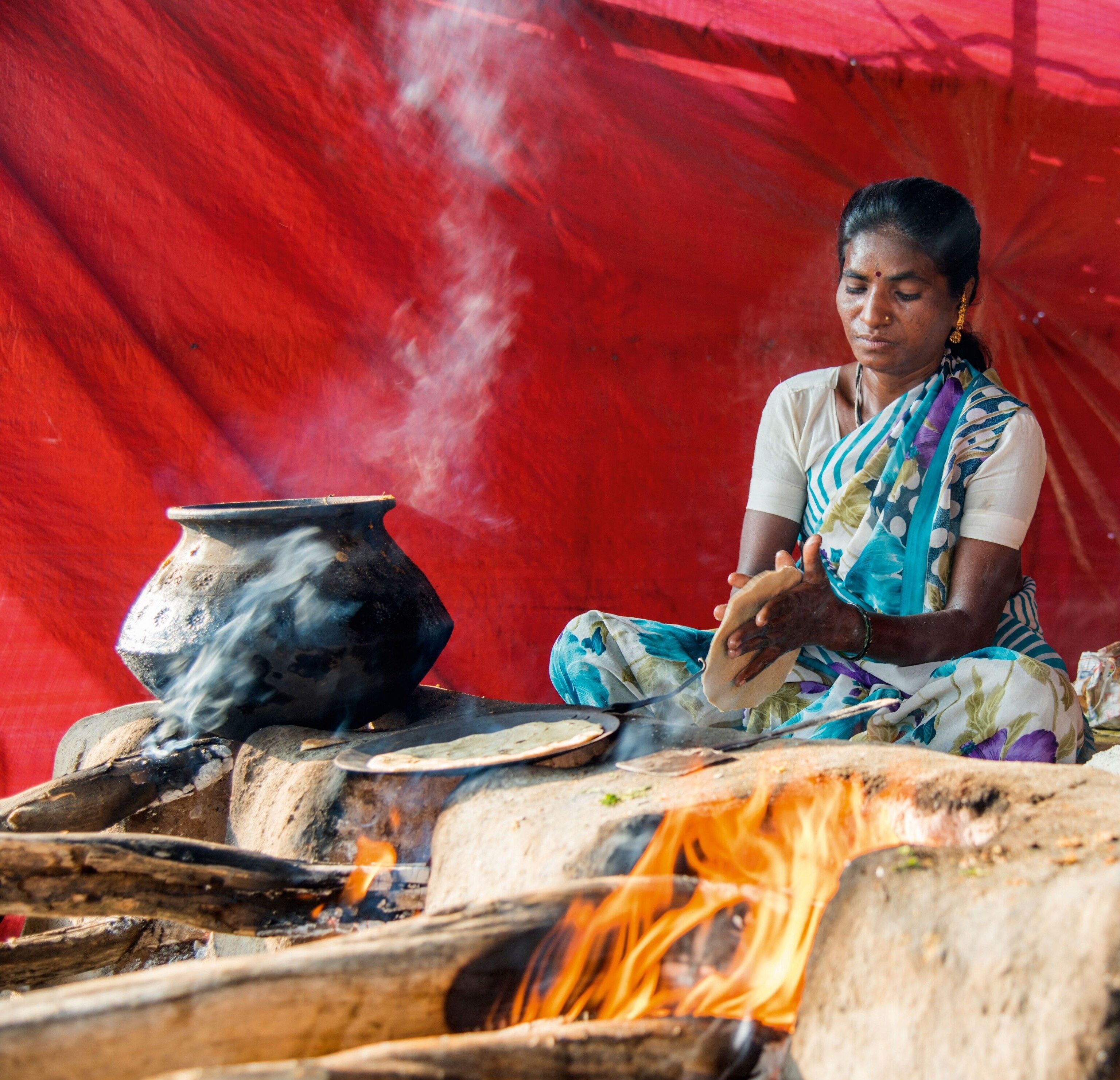
2. Use roti to tell a story
A roti flatbread (also known as chapati, phulka or maani) may look innocent: an unleavened bread that can double up as both plate and spoon for whatever it’s being eaten with. But the roti tells a story of early farming, trade routes and slave trading, indentured servitude and mass migration. While it’s been part of diets on the subcontinent for centuries, over the last 500 years of colonisation, roti followed the communities dragged away from their homelands in south Asia. Today it’s a staple in Sri Lanka, Thailand, Malaysia and Indonesia, and important to people of South Asian descent in South Africa and across the Caribbean.
Where to start: Malaysian restaurant Roti King in London makes them fresh to order, served with curries or stuffed with cheese.
3. Bake your bread – twice
As far back as 3,000 years ago, Sardinian shepherds would head into the hills laden with parcels of pane carasau to sustain them. Also known as carta di musica, meaning ‘music sheet’, in reference to its thinness, it could last them for up to a year. Recently, archaeologists have found traces of this bread — still a Sardinian staple — in many of the megalithic stone dwellings scattered across the island. It’s made from durum wheat dough rolled into paper-thin circles and baked in wood-burning ovens. As they puff up like balloons, the still-soft rounds are each split into two discs, flattened and baked a second time until crisp.
Where to start: At Sheffield’s Domo Restaurant, it’s served with mazza frissa, a creamy dip made from milk and semolina.
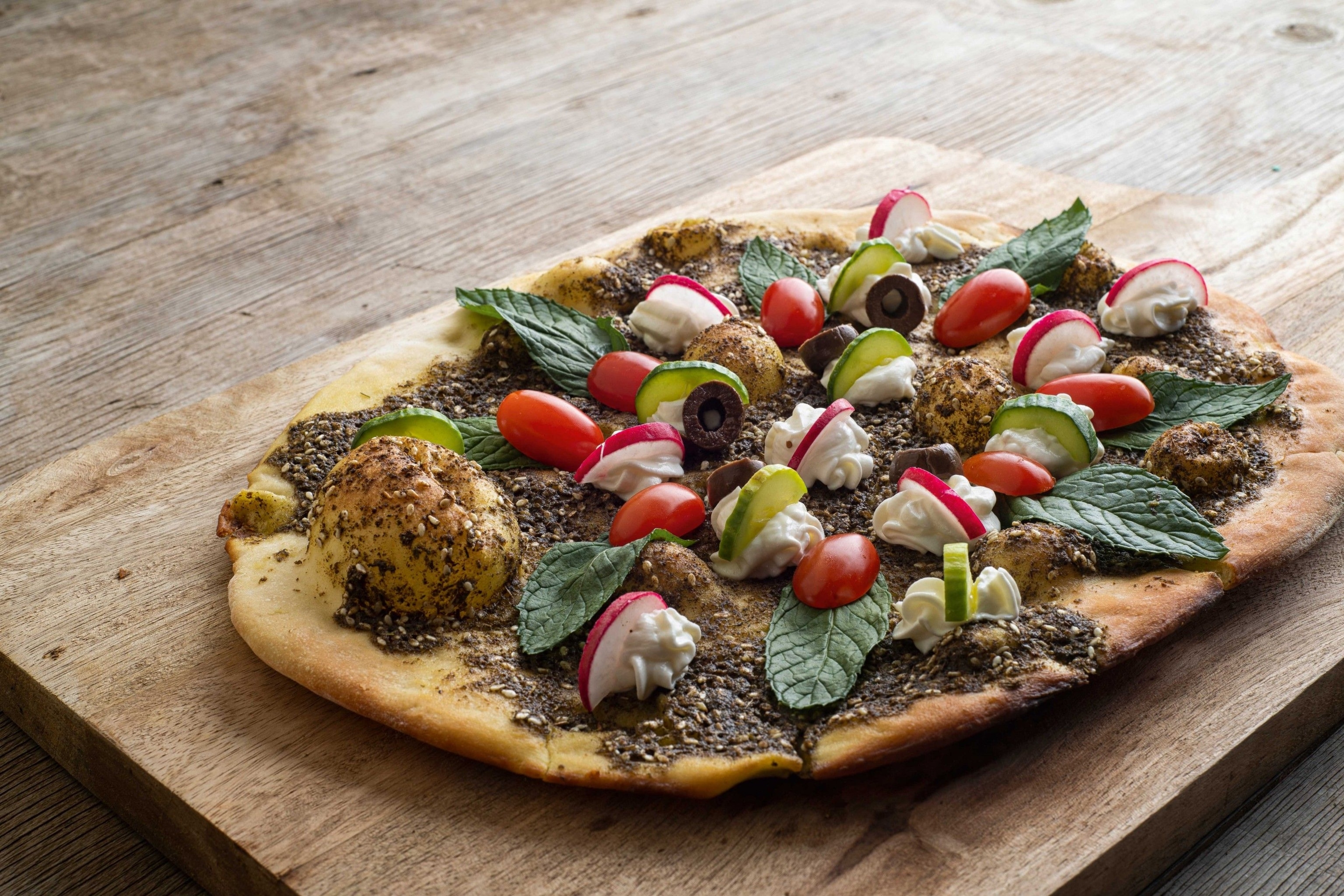
4. Make peace with man’oushe
There are plenty of places in Beirut to get man’oushe, a za’atar-speckled flatbread traditionally served in the morning. But if you like your breakfast to have an impressive civic legacy, head to the Souk el Tayab farmers’ market. It was founded in 2004 by Kamal Mouzawak as a means of uniting communities splintered along ethnic and religious lines after years of conflict, while also empowering women in particular to profit from their regional produce. Under the banner Make Food, Not War, the market has also helped to keep ancient culinary traditions — like proper man’oushe making — alive.
Where to start: The Lebanese Bakery in Holborn sells it freshly baked and topped with a huge variety of cheeses and meats.
5. Have a row about cornbread
Until industrial milling came to southern USA in the early 20th century, nobody used wheat flour or sugar for cornbread — stone- or water-ground cornmeal had enough flavour and texture when mixed with just eggs, butter, buttermilk and maybe a raising agent. But the new steel mills ground corn more finely and the heat of the rollers robbed it of its flavour, resulting in bland, crumbly cornbread. In response, some cooks began adding wheat to hold it together, and sugar for taste. Others, however, dismissed the result as a cake. Today, if you want to start an argument in the South, this is one topic that’ll do it.
Where to start: Try jalapeño cornbread at London’s Caravan or check out Norfolk’s The Tudor Bakehouse.
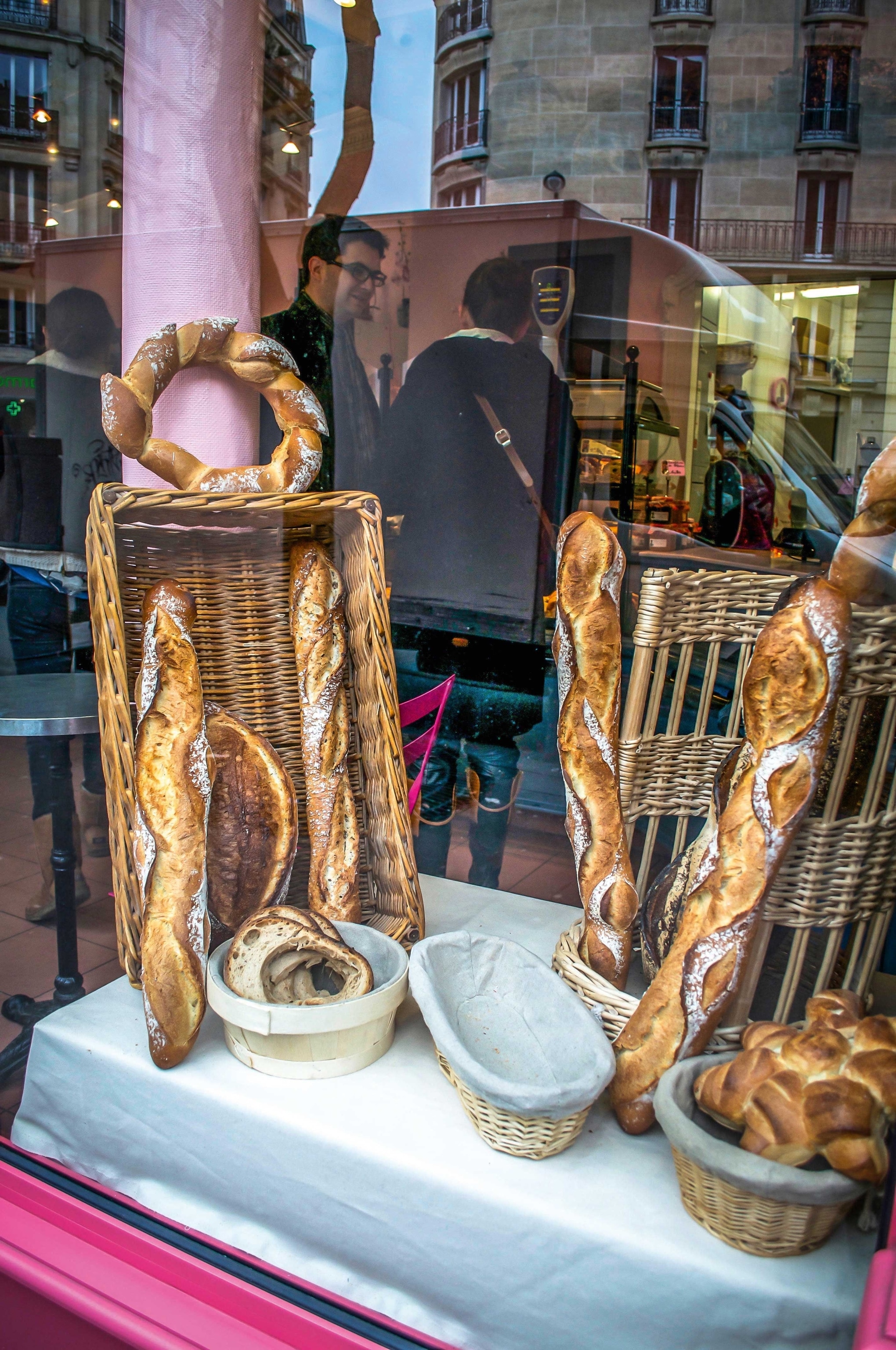
6. Try the best baguettes in Paris
Best served slathered in cool, creamy butter, “It was the second time I’d entered, and we did lots of perhaps with a slab of brie or top-quality ham, the baguette is as quintessentially French as the beret and a bottle of rouge. Indeed, the nation is said to consume around 10 billion baguettes every year. Yet it seems not all are created equal. While the official ingredients of a ‘baguette de tradition’ are flour, salt, yeast and water, artisan bakers will painstakingly source their flour from specialist mills and work the dough in specific ways in order to produce a superior ‘pain’. Traditionally, five slashes (‘grignes’) are made along the top of the loaf to let the carbon dioxide escape; the exact pattern varies from baker to baker and is akin to their signature.
Given the sheer quantity sold across France every day, finding the best baguette can be a challenge. Limit your search to Paris, however, and help is at hand in the form of an annual competition designed to find the city’s best loaf. For the past 25 years, the Grand Prix de la Baguette has sorted the soggy from the crispy and the doughy from the fluffy. To enter, boulangeries from across the city submit two baguettes of identical weight and length to be scrutinised by a panel of chefs, bakers and food experts. The winner receives €4,000 (£3,390).
Last year’s winner, Fabrice Leroy, was delighted — and more than a little surprised — to scoop first place, having changed career from a project manager at SNCF (France’s national railway company) to boulanger only three years before.
"It was the second time I'd entered, and we did lots of trial runs in the week before,” he explains. “But I didn’t think we’d win, so I just got on with my day. Then at 7pm, the mayor of Paris [Anne Hidalgo] rang and she said we’d won. I thought it was a joke at first!”
So what makes the baguettes at Boulangerie Leroy- Monti stand out? “We do a slow fermentation, so it’s prepared the night before, which makes a good crust,” says Fabrice. “We really take time to work the dough and that gives the flavour.”
As well as the prize money, the winner gets the chance to supply the Elysée Palace with bread for a year. Did this extra order put pressure on the business? “Not really,” says Fabrice. “The order is about 20 baguettes a day, but it can get busier. For the Journées de Patrimoine [heritage open days], we supply 300 sandwiches and 300 croissants.”
This year, Fabrice will join the jury to choose the winner for 2020 — and he already knows what he’ll be looking for. “There are certain clues to good quality: the colour; how it feels when you squeeze it,” he explains. For, as Fabrice and anyone else in the know will tell you, when you squeeze a good-quality baguette, ‘elle chant’ — it sings. CB
Where to start: Brighton’s The Flour Pot makes a classic baguette from 24 hour-fermented dough. In Norfolk, try the French sticks from the award-winning Bread Source bakery.
7. Learn a thing or five about challah
Uri Scheft is founder of Breads Bakery in New York, owner of Lehamim Bakery in Tel Aviv and author of Breaking Breads: A New World of Israeli Baking (£27.99, Artisan). Here, he shares five facts about this Jewish special-occasion bread.
- Challah is similar in appearance to brioche, but is kosher and dairy-free. “Challah is a bread, while brioche belongs to the viennoiserie family, along with croissants and Danish pastries. Brioche is very rich, thanks to lots of eggs and butter, whereas challah dough uses water to bring together the ingredients. For kosher reasons, Jewish challah is made with vegetarian oil.”
- It’s important to under-do everything. “Slightly underknead the dough, so it’s not worked to the gluten’s full potential. Slightly underproof the challah, so that when you press a finger into the rising dough, the depression that’s left fills in about halfway. Slightly underbake to a light brownish colour, so the bread will still be moist the next day. My challah is a lightly sweet and very tender bread that pulls apart into long, cottony strands.”
- Challah isn’t always braided — the design depends on where it’s made. “The way challah is shaped makes it special; it’s no ordinary loaf or boule. Although challah is considered an Eastern European Jewish (Ashkenazi) bread, I’ve seen versions baked around the world. In Djerba, Tunisia, the challah isn’t braided at all but is shaped as a kishlaya (flower). In Colombia, they add chocolate and streusel [crumb topping]. I’ve fashioned loaves inspired by ancient Roman art and texts depicting Jewish people, and I’ve baked small tins into the centre of the challah to then be filled with salt or honey for dipping. The three-strand braided challah is an entry- level challah; shaping it is no more difficult than braiding a young girl’s hair.”
- Challah has travelled the world with the Jewish diaspora, allowing it to spread to gentile communities. “In Eastern Europe, I discovered bakeries that make challah daily without realising the bread was in any way related to Jewish culture.”
- Its richness is part of the ritual. “In the old days, to differentiate between day-to-day bread and shabbat [the Sabbeth] bread, they added what were expensive ingredients to the dough, like eggs, oil and sugar. Challah is a bread meant for occasions; the ritual is to bless the wine and then the challah, then sprinkle the bread with salt and pass each person a piece.”
Where to start: London’s Rinkoff bakery offers a plaited and a round challah, as well as a raisin version. Mark’s Bakery in Devon sells challah burger buns, plus plain, poppy seed and sesame seed loaves.
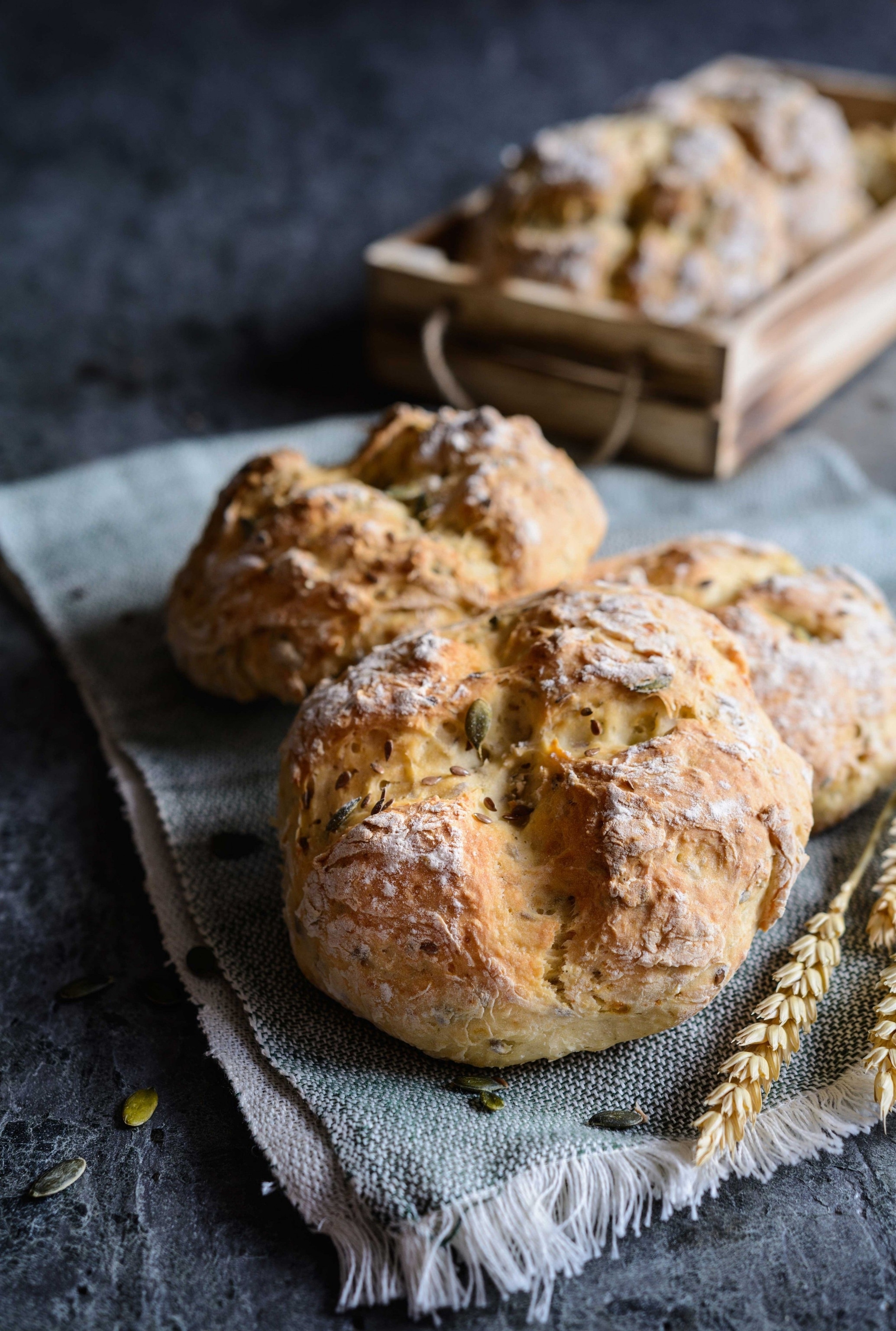
8. Bake a quick-to-make loaf
Soda bread, Ireland’s national loaf, gets its name from the use of bicarbonate of soda — rather than yeast — as a leavening agent. Given there’s no fermentation time needed, it’s quick to make.
Darina Allen’s soda bread
Darina is the founder of Ballymaloe Cookery School in County Cork. Her soda bread takes just 2-3 mins to prep and 30-40 mins to bake.
Makes: 1 loaf
Takes: 50 mins
Ingredients
- 450g white flour, preferably unbleached
- 1 level tsp salt
- 1 level tsp bicarbonate of soda 3
- 50-400ml sour milk or buttermilk, to mix
Method
- Heat oven to 230C, 210C fan, gas 8. Sieve the dry ingredients into a large bowl. Make a well in the centre, then pour in most of the milk. Use one hand to mix in the flour from the sides of the bowl, adding more milk if necessary. The dough should be softish, and not too wet or sticky. When it all comes together, turn the dough out onto a well-floured work surface.
- Wash and dry your hands. Tidy up the lump of dough, then gently flip it over. Pat into a round about 2.5cm high. Cut a cross into the top of the rounds, tracing the knife right over the sides. Bake for 15 mins, then turn the oven down to 200C, 180C fan, gas 6 for 30 mins, or until the bread is cooked. If you’re in any doubt, tap the bottom of the bread: if it’s cooked, it will sound hollow.
This is an extract from cookingisfun.ie and from Forgotten Skills of Cooking, by Darina Allen (£35, Kyle Cathie)
Where to start: Paul Rhodes Bakery in London makes a great soda bread.
9. Build a perfect sandwich
Chef Max Halley became so obsessed with sandwiches, he opened a restaurant in north London dedicated to them. It’s called Max’s Sandwich Shop (he’s also written a book, Max’s Sandwich Book) and his are no ordinary sarnies. Take The Korean Gangster, for instance, which combines soy- and vinegar- braised mutton with two types of deep-fried noodle, baby gem lettuce, coriander, parsley, kimchi, kraut, doenjang and gochujang. As you might expect, Max has rules; here’s his guide to sandwich perfection.
The bread
“Crust is crucial. The best bread for sandwiches has crust everywhere. We make our own plain foccacia because it has crust all over, but you can use ciabatta rolls. Run them under the tap until they’re really wet, then put them in a hot oven for maximum crustiness. If you’re using bread to add flavour, you’re not making good enough sandwiches. It’s just a vessel — a plate. Sourdough is no good because it’s full of holes, falls apart and rips, leaving you with mayo over your fingers.”
The filling
“I have a mantra for every sandwich’s filling: ‘hot, cold, sweet, sour, crunchy, soft’. You don’t necessarily need six separate things to achieve this balance. A gherkin, for instance, is two things. But every bite needs all these factors in an equal ratio.”
The condiments
“Mayo is the sandwich condiment god. First, quadruple the amount you think acceptable (if not mayo, use whatever emulsified fat you want, such as sour cream). Second, mix your condiments with that mayo. Think of a sausage sandwich: you’ve buttered the bottom, added the sausage and now you want mustard — but you can’t spread the top evenly because you’d get pockets. If you mix the mustard with the mayo instead, you get a juicier sandwich and a more even, controllable layer of condiment.”
The texture
“My sandwiches contain deep-fried elements for added crunch, like noodles, crisps or croutons (and they said you couldn’t put bread in a sandwich!).”
The brilliance
“What makes the sandwich so great, and the reason I’m never bored of it, is that as long as it’s between two bits of bread, the whole world’s cuisine is open to you. I was putting samosas in sandwiches the other day.”
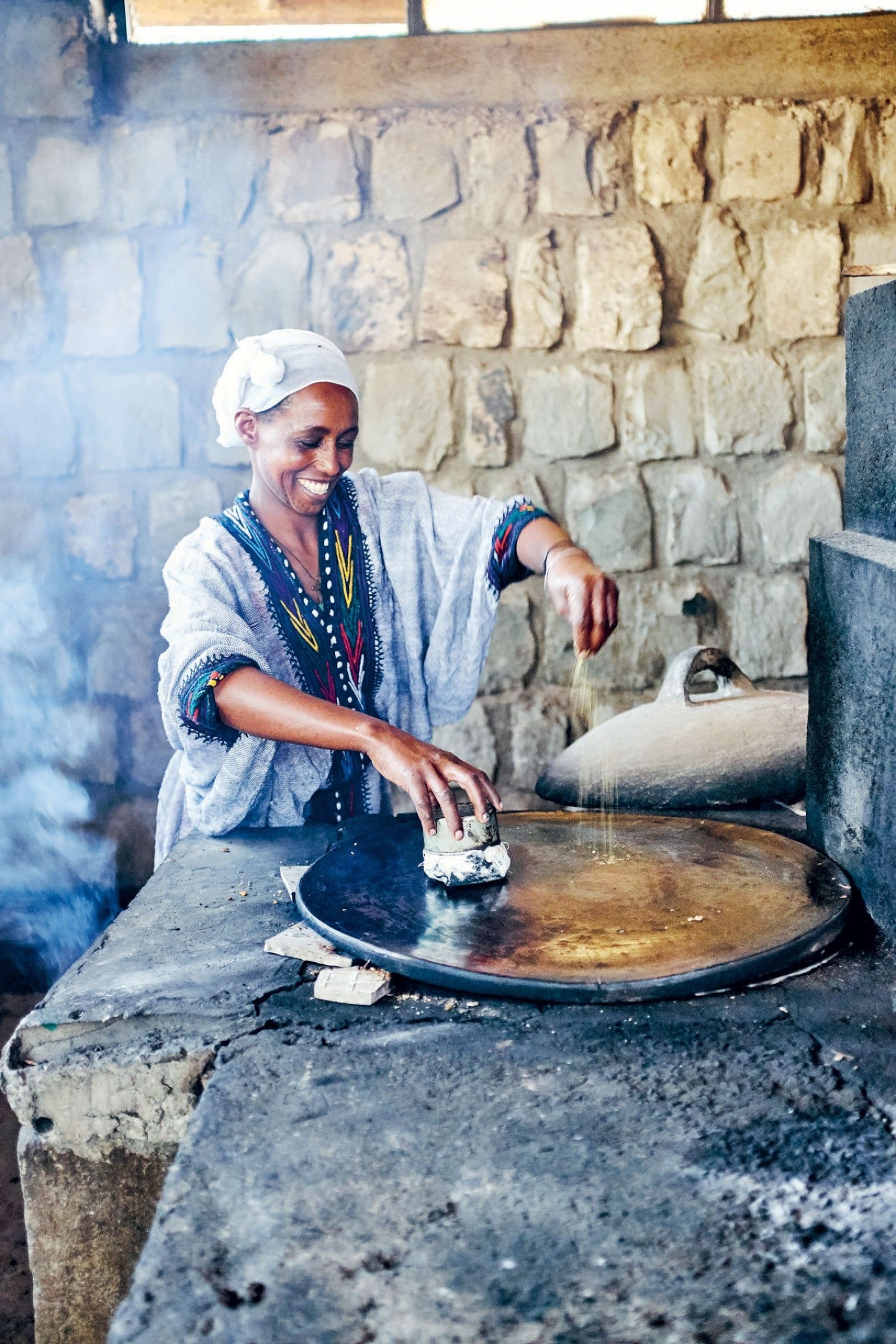
10. Make your own injera
This sour flatbread is an Ethiopian staple. “We can’t eat any of our stew-based meals without it,” says author and chef Yohanis Gebreyesus. “It’s made of teff flour — an indigenous cereal domesticated by our forefathers 3,000 years ago.”
Yohanis Gebreyesus’s injera
Serves: 2
Takes: 20 mins plus 24hrs resting
Ingredients
- 240g teff flour
- 500ml bottled still water
- 1⁄4 tsp salt
- 1⁄2 tbsp baking powder vegetable oil, for the pan
Method
- Tip the flour into a non-reactive bowl, then work in the water and stir. Cover and leave for 24 hrs.
- The batter should now be slightly foamy. Whisk in the salt and baking powder; the batter will deflate as you stir.
- Moisten a paper towel with oil, then wipe the surface of a nonstick crepe pan or frying pan and set over a medium–high heat. Use a spouted measuring cup to scoop up 125–250ml of the batter (depending on the size of the pan). Pour the batter into the pan in a thin stream and in one continuous, spiral motion, starting at the outside edge of the pan and working inwards. Swirl the pan if the batter needs to be more evenly distributed.
- Cook until bubbles form on the surface and the batter begins to set. When about 75% of the surface has changed colour (around 45 seconds to 1½ mins), cover the pan with a large glass lid. Cook until the edges begin to curl, the top is quite dry and the injera has released from the bottom of the pan. Don’t flip. Once cooked, use a long, thin spatula and a thin plate to transfer the injera to a flat basket or a plate lined with parchment paper.
- Remove any stray dough from the pan, apply more oil if needed and reheat. Continue as above, layering each injera on top of the last when done (allow to cool for at least 5 mins before placing another on top). After you’ve made the first few, turn the heat to medium–low. Allow the injera to cool for at least 30 mins before serving.
Taken from Ethiopia: Recipes and Traditions from the Horn of Africa, by Yohanis Gebreyesus (£30, Octopus)
Where to start: London is home to several great Ethiopian restaurants, including Zeret Kitchen.

11. Taste a bread worthy of UNESCO status
There are at least 53 different kinds of khachapuri, a traditional Georgian cheese-stuffed bread that’s been given Intangible Cultural Heritage status by UNESCO. It’s not hard to understand khachapuri’s popularity — although each region has its own version, the one thing almost all khachapuri share is that they’re filled or topped with a large amount of melted cheese (plus optional ground meats, potatoes, greens or herbs). And they’re often served as a side, despite being at least the size of a small pizza.
The boat-shaped adjaruli khachapuri, which originated near the Black Sea, is probably the most famous, and the easiest to find outside Georgia. It’s also even more unctuous than the basic dough and cheese version, given that, fresh from the oven, an egg is broken onto the bubbling cheese, cooked until barely set and topped with a pat of butter. If temptation gets the better of you, don’t tell your cardiologist.
In Tbilisi, the Georgian capital, try it at Retro, run by Gia Agirba, who’s been making khachapuri since he was a child. Alternatively, for a more refined experience, visit Barbarestan. Set up by restaurateur Levan Qoqiashvili in a bid to illuminate Georgia’s pre-Soviet culinary heritage, it was recently placed on the ‘50 Best Discovery’ list.
Where to start: Try Little Georgia restaurant in Hackney and Islington.
Published in the March 2020 issue of National Geographic Traveller Food
Find us on social media
Facebook | Instagram | Twitter
